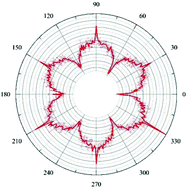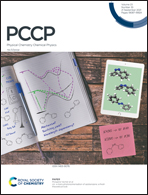Full-spectrum thermal analysis in twisted bilayer graphene
Abstract
It has been recently reported that a magic angle, i.e. 1.1°, exists in twisted bilayer graphene which could lead to intrinsic unconventional superconductivity. Variations of the twisting angle between different graphene layers could lead to altered electronic band structures, which results in the peculiar superconductivity phenomenon. The effects of twisting angles on different properties of bilayer graphene need to be comprehensively investigated in order to fully understand its mechanism. In this work, classical molecular dynamics simulations are performed to calculate the interfacial thermal resistance (R) at twisting angles from 0° to 359°. Due to the symmetric structures of the honeycomb lattice, only angles from 0° to 60° are needed but the full spectrum is explored to generate the complete picture of R with θ. It was reported that the interfacial thermal resistance changes periodically with the twisting angle, with the smallest R values at every 60° starting from 0° and the largest values at every 60° starting from 30°. The phonon density of states and radial distribution functions are calculated to explain the predicted results. The effects of temperature and single- and bi-direction tensile strains on the calculated interfacial thermal resistance are also studied. The results in this work contribute to the fundamental understanding of the thermal properties in twisted bilayer graphene and provide reasonable guidelines to its applications in thermal management devices.



 Please wait while we load your content...
Please wait while we load your content...